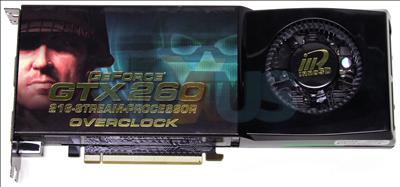Introduction
Jo Shields, Manager of the Oxford Supercomputing Centre, lays ATI and NVIDIA hardware on the line, evaluating which perform best under Linux.Almost five years have passed since my last formal comparison of ATI and NVIDIA on Linux. At the time, it was only a brief mention as part of a larger tutorial article, and the result was "an NVIDIA card three times cheaper is three times faster". Since then, I've let the impressions left on me remain, and have been pretty religious in buying NVIDIA hardware, to ensure performance under Linux.
However, is it fair of me? Does ATI still suck under Linux, or have I let opinions formed in 2004 cloud my judgement all the way up to today? I've been tasked with finding out - and for the task, I have two reasonably equivalent cards to compare: an Inno3D GeForce GTX 260 OC 896 MB (the modern 216-core variety), and a PowerColor PCS+ HD4870 1GB. Both models have seen the steely gaze of the HEXUS editorial team before, here and here.
Modern GNU/Linux distributions make the pain of installing accelerated drivers pretty much go away - the OS used for testing here is Ubuntu 8.10, which has a simple interface under System/Administration/Hardware Drivers for one-click installation of an accelerated driver. Compared to the config-file editing needed last time I looked at graphics drivers, this is positively foolproof. You should even get an icon in your system tray to warn you if you don't have accelerated drivers enabled, but really should do.
NVIDIA is usually considered the oldest horse in this particular race - it's been releasing 3D-accelerated drivers for Linux since mid-2001, and even brought us 64-bit native drivers in late 2002. The 81.74 release brought further feature parity to Linux in late 2005, with SLI support. The driver being used in this test is ForceWare 180.37.
Curiously, ATI has been in the Linux even longer than NVIDIA, with releases going back as far as March 2001. However, its "FGLRX" driver was born in the workstation market, allowing use of their FireGL cards in Linux, so features relevant to the average desktop user were hardly top of the priority list. The first desktop-enabled release was in November 2002 with 2.4.3; the first 64-bit-enabled driver in January 2005 with 8.8.25. However, ATI seems to have stepped up its game in the past couple of years, starting with the 8.35.5 driver in March 2007 that introduced a vastly improved control panel, the Catalyst Control Centre Linux Edition. The latest significant feature addition is in the Catalyst 8.8 driver, released only a few months ago, which added some CrossFire support. For this test, we're using a pre-release Catalyst 9.4 driver, with a build number of 8.600, taken from the Ubuntu development release archive.




